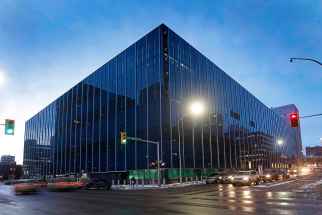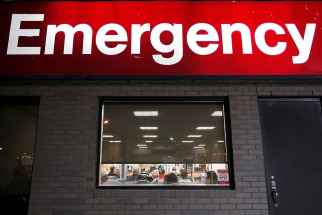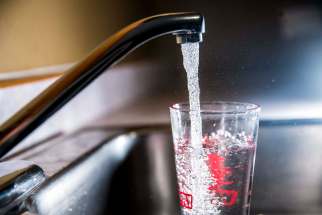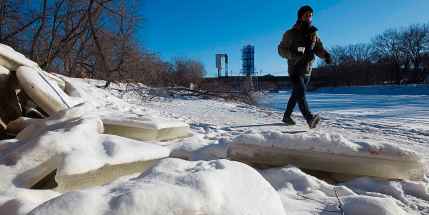Taps stay open on Winnipeg’s hidden tax
Read this article for free:
or
Already have an account? Log in here »
To continue reading, please subscribe:
Monthly Digital Subscription
$0 for the first 4 weeks*
- Enjoy unlimited reading on winnipegfreepress.com
- Read the E-Edition, our digital replica newspaper
- Access News Break, our award-winning app
- Play interactive puzzles
*No charge for 4 weeks then price increases to the regular rate of $19.00 plus GST every four weeks. Offer available to new and qualified returning subscribers only. Cancel any time.
Monthly Digital Subscription
$4.75/week*
- Enjoy unlimited reading on winnipegfreepress.com
- Read the E-Edition, our digital replica newspaper
- Access News Break, our award-winning app
- Play interactive puzzles
*Billed as $19 plus GST every four weeks. Cancel any time.
To continue reading, please subscribe:
Add Free Press access to your Brandon Sun subscription for only an additional
$1 for the first 4 weeks*
*Your next subscription payment will increase by $1.00 and you will be charged $16.99 plus GST for four weeks. After four weeks, your payment will increase to $23.99 plus GST every four weeks.
Read unlimited articles for free today:
or
Already have an account? Log in here »
Hey there, time traveller!
This article was published 06/01/2020 (2165 days ago), so information in it may no longer be current.
Winnipeg council is on pace by 2030 to have siphoned more than $700 million from the city’s water and sewer utility in so-called dividends — money that’s transferred to general revenues.
That’s enough to cover about three-quarters of the cost of two planned major sewage treatment plant upgrades.
Think about that as Winnipeg contemplates another round of water and sewer rate increases over the next four years.
City administration is recommending raising rates by three per cent in 2020 and 2021, and 2.8 per cent in 2022 and 2023.

!function(e,i,n,s){var t=”InfogramEmbeds”,d=e.getElementsByTagName(“script”)[0];if(window[t]&&window[t].initialized)window[t].process&&window[t].process();else if(!e.getElementById(n)){var o=e.createElement(“script”);o.async=1,o.id=n,o.src=”https://e.infogram.com/js/dist/embed-loader-min.js”,d.parentNode.insertBefore(o,d)}}(document,0,”infogram-async”);
The proposed hikes come after several years of sharp rate increases, charged, in part, to compensate for the loss of tens of millions council skims from the utility every year.
This year alone, the city is expected transfer $34.6 million from the utility into general revenues. It began taking dividends in 2011, under then-mayor Sam Katz.
City officials call it a “return on investment,” although they’ve never explained how siphoning money out of a taxpayer-owned, self-financed utility could be construed as such.
The city does not subsidize it with property tax revenue; it makes no “investment” — which means there can be no return. It’s really nothing more than a backdoor tax grab.
That money should be used solely to fund the utility’s operations and capital costs, including plant upgrades, sewer renewal and water-meter replacements. None of it should be transferred to city coffers to pay for general operations.
Administration says part of the reason rates must rise further is to pay for upgrades to the north end water pollution control centre; however, if the city wasn’t raiding the utility, that $700-million-plus would go a long ways to footing the bill.
In 2011, city council began taking eight per cent of the utility’s gross sales, netting it $17.1 million in the first year. It grew to $20 million by 2014. Every time rates go up, the city gets a larger dividend.
When Mayor Brian Bowman came into office in 2014, he liked the dividend so much, he raised it to 12 per cent in his first budget. That brought the total haul to $30.8 million in 2015.

It grew every year until 2019, when council voted to reduce the dividend to 11 per cent of gross sales. The total haul last year was still $34.2 million. It’s expected to rise about $1 million each year as rates climb.
From 2011 to 2018, the city skimmed a total of $211 million from the utility, according audited financial statements.
If the dividend revenue climbs about $1 million a year, general revenues will take in a staggering $511 million from 2019 to 2030. That’s $722 million over 20 years.
To put it into perspective, the city’s cost projections for two upcoming upgrades to the north end water pollution control centre is $961 million.
Administration says part of the reason rates must rise further is to pay for those upgrades; however, if the city wasn’t raiding the utility, that $700-million-plus would go a long ways to footing the bill.
“This represents a hidden property tax increase that should be made explicit and transparent.”–Public Utilites Board
Some councillors have said it’s unrealistic to expect the city to stop taking the dividend. They claim they need the money to pay the bills.
That’s always the problem when governments raise taxes (which is what the dividend is): they get used to the revenue, and insist they can’t live without it.
City hall’s decision to take an annual dividend has forced the utility to raise rates higher than it otherwise would in order to make up for the lost revenue. Residential water rates jumped 41 per cent from 2010 to 2018; sewer rates climbed 42 per cent during the same period.
The utility also levies a daily basic charge of 55 cents, increased from 15 cents since 2011 (a $145 annual increase for a residential customer).
In a 2012 report, the Public Utilities Board (which doesn’t regulate the city’s sewer and water rates but does have some oversight responsibilities) criticized city hall for taking the dividends. It estimated about 20 per cent of the utility’s revenues were used to subsidize the general operations.
“This represents a hidden property tax increase that should be made explicit and transparent,” the PUB report said.
It looks like Winnipeggers are in for another round of hidden tax increases.
tom.brodbeck@freepress.mb.ca

Tom has been covering Manitoba politics since the early 1990s and joined the Winnipeg Free Press news team in 2019.
Our newsroom depends on a growing audience of readers to power our journalism. If you are not a paid reader, please consider becoming a subscriber.
Our newsroom depends on its audience of readers to power our journalism. Thank you for your support.












